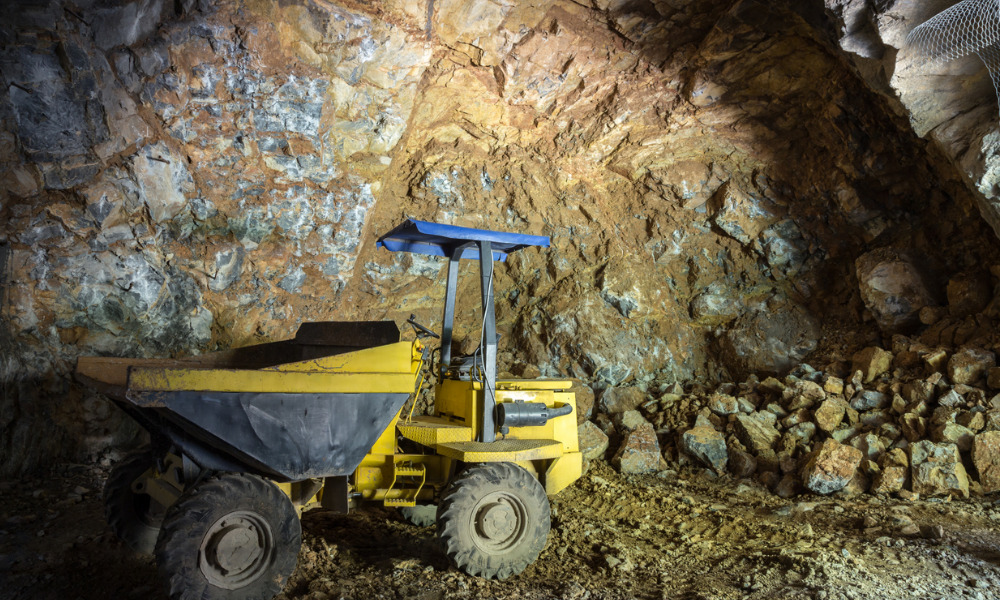North American mining vehicle market expected to grow by $4B over next decade

The North American underground mining vehicle market is poised for remarkable growth, with Future Market Insights (FMI) projecting a valuation of $4.8 billion USD in 2023, surging to an estimated $8.8 billion USD by 2033. This anticipated growth is attributed to increased investments in mining and industrialization, coupled with the integration of artificial intelligence and machine learning technologies, all of which are expected to improve safety in a high-hazard industry.
Nikhil Kitwaide, vice president of Future Market Insights, highlights the benefits saying, "automation in mining vehicles offers numerous advantages, such as enhanced safety, fuel efficiency, productivity, maintenance, working conditions, vehicle utilization, and reduced driver fatigue."
One of the prominent trends driving this transformation is the increasing adoption of electrically operated vehicles in underground mining operations. Traditional diesel vehicles contribute significantly to greenhouse gas emissions and climate change, prompting various commercial vehicle sectors to explore innovative electric designs to penetrate the expanding market.
Kitwaide projected that approximately 58% of automobiles in the United States will be electric by 2030, primarily driven by the decreasing prices of essential minerals like lithium, which are crucial for battery systems and inverter technology.
"The adoption of electric vehicles is not just driven by environmental concerns but also by the lower prices of minerals used in battery systems and the advancements in inverter technology," notes Kitwaide.
The allure of electric vehicles extends beyond reducing emissions. These vehicles promise quieter operation, reducing noise pollution in underground mines, and ultimately creating a safer working environment for miners.
Elaborating on the transition to electric vehicles, Kitwaide says, "in underground mines, noise from traditional vehicles and exhaust emissions pose a significant challenge to operators and workers. Shifting to electric or hybrid vehicles can mitigate these concerns, enhancing safety and worker well-being."
However, Kitwaide acknowledged the need for robust charging infrastructure to support the widespread adoption of electric vehicles. Mining sites are often located in remote areas, making access to reliable charging stations a significant logistical challenge.
To tackle this issue, Kitwaide pointed to potential solutions such as hydrogen-powered electric chargers. "Hydrogen-powered cells could offer a viable solution for instant charging in remote mining locations, ensuring electric vehicles remain operational with minimal downtime," he suggested.
While electrical vehicles are expected to enhance safety overall, this transformational change in the industry does come with a few new safety challenges.
Brandon Vance is a health, safety, and environment consultant with NORCAT. He says it’s going to be challenging to navigate the changes “They're going to need to create new processes, new procedures, and new risk assessments,” says Vance, “they're going to need to reskill and upskill.”
When addressing safety concerns, Kitwaide emphasized that while electric vehicles do not present inherent hazards, there are certain limitations to consider. Electric vehicles tend to have a higher torque range, which could lead to increased tire wear, but these limitations do not equate to safety hazards.
"As long as electric vehicles adhere to the necessary regulatory compliance standards before commercialization, they are no more hazardous than their traditional counterparts," assured Kitwaide.
But Tom Welton, director for health and safety services with Workplace Safety North, says the batteries are a new hazard presented by electrical vehicles.
“These batteries are the size of a small chest freezer and can only be moved with lifting equipment,” explains Welton, “and based on the size, there is a high potential of quite an extensive fire if they do catch fire, and they're very difficult to put out.”
As the industry embraces the shift towards electric and hybrid vehicles, safety remains a paramount concern. Ensuring stable mining sites, improved visibility, and providing specialized training for operators using purpose-built machines will be essential to maintaining worker safety and operational efficiency.





